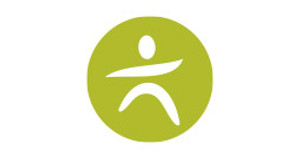Straight 'A' Ergonomics for Students
Posted by Human Solution on Oct 10th 2010
Anyone who has spent many years on a computer for long hours is likely to recognize the value of an ergonomically designed workstation. However it is pretty easy to fail to recognize how important it is to set up students properly and to insure that they understand how good posture and habits can keep them healthy and pain free. Prevention is the best cure. So the question begs, how can a student interact safely and comfortably with their computer?
One of the key factors to an ergonomically designed student work area is how well it fits the body. Chairs, keyboards and tables designed to fit an adult may be too small for children. An often overlooked consideration is that a workstation and tools designed for a large man will not likely fit a petite woman. Chairs, desk height, keyboards and mice all need to fit the body. Check out our ergonomic office assessment tool for an idea of where tools should be placed for adults. While the tool doesn’t provide specific answers for people smaller than five feet, the images presented illustrate effectively how the body should be positioned so you can use a tape measure for a smaller person.
Chairs are usually height adjustable and better quality chairs usually offer seat depth adjustment and may offer different cylinders to accommodate shorter or taller seated heights. A height adjustable desk is a great option for a growing student and can last for decades. Use of a keyboard tray can bring the keyboard and mouse into the lap, where they should be, as well as modify a too tall desk for a shorter person.
Mice are available in various sizes. For a really small hand, a trackball, such as the Kensington Orbit, may be an excellent option that can still be used as the child grows. Several high quality ergonomic mice are available in sizes including the Perfit Mouse and the Handshoe Mouse. The Orthomouse comes with a set of adapters that let you fit it to just about any hand.
Keyboards also come in different sizes. Average to larger bodies would benefit from a split keyboard such as theKinesis Freestyle which offers the ability to place the keyboard halves farther apart to reduce stress on the shoulders. For really small hands, consider a mini-keyboard such as the Adesso MCK-91 or Evoluent Mouse Friendly Keyboard. I really like the Goldtouch Go! Travel Keyboard as it is smaller, but still offers the tenting and angle control of a full-sized ergonomic keyboard and it travels really well with my laptop. Since most students use laptop computers these days, a travel keyboard is a real hand saver.
Speaking of laptop computers, from an ergonomic standpoint a laptop presents significant ergonomic problems. In addition to potential hand problems from use of the keyboard and trackpad, staring down at the screen is a sure fire recipe for neck and back problems. The use of a separate monitor is one way to bring the viewing screen up to a level where it doesn’t harm the body. However, it is better for most people to raise the laptop to proper viewing height and then use a separate keyboard and mouse. Use of a laptop stand or laptop arm (on a permanent workstation) will do the trick. For more information, check out this three part article series on laptop ergonomics.
Good ergonomics may not guarantee that “A” but computing pain free surely will help.




